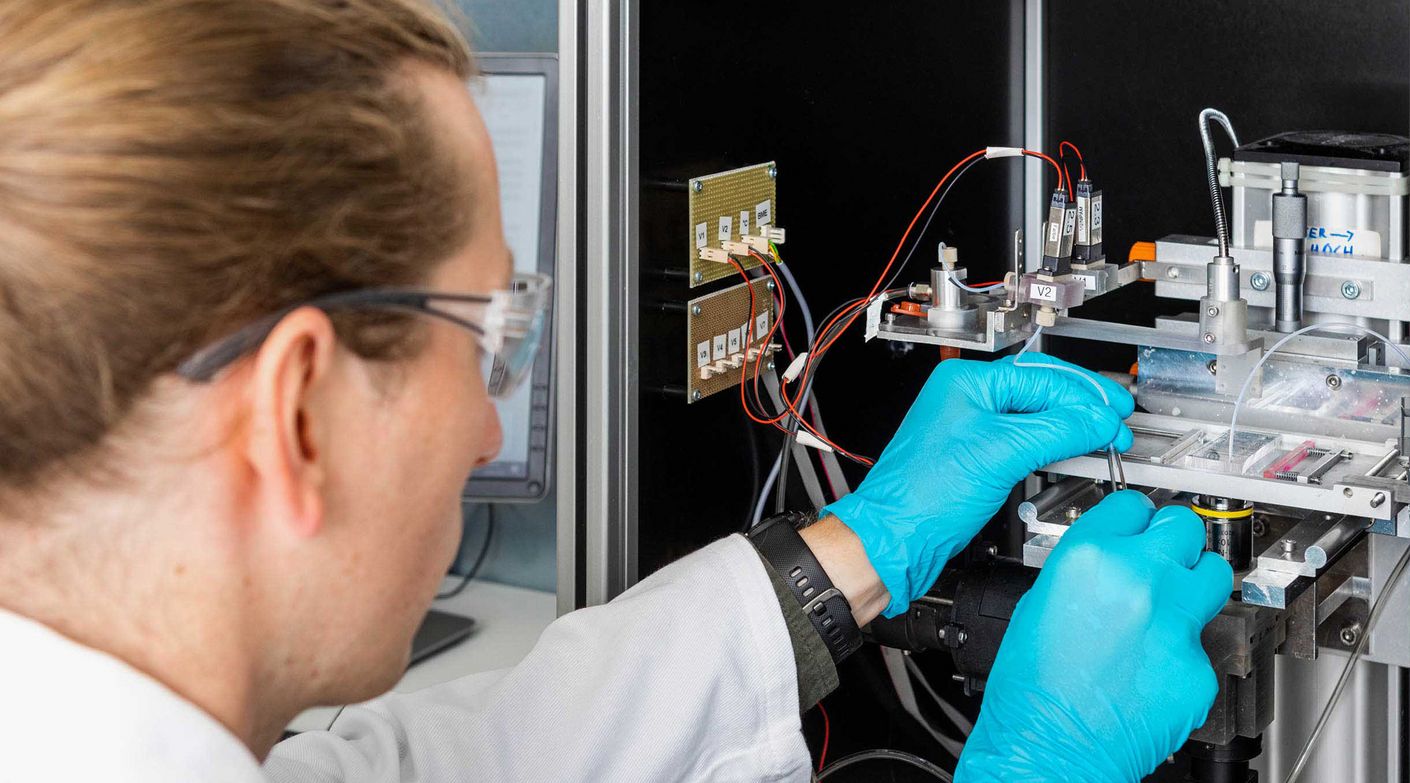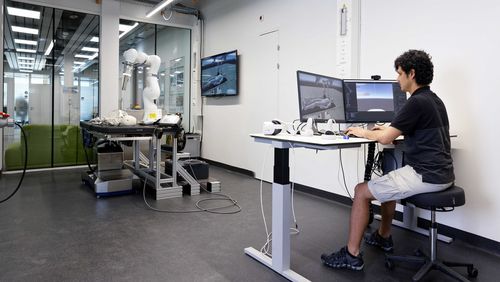
Progress on many fronts
The TriggerINK team at DWI – Leibniz Institute for Interactive Materials in Aachen are working to develop an innovative method to promote cartilage regeneration in damaged joints. To realise their vision, they must first break new ground in various research areas—and last year saw them make several important advances.
In their work to enable regeneration in damaged cartilage, researchers in the TriggerINK project have chosen an innovative, highly sophisticated strategy. Described in simple terms, the team from Aachen are first fabricating a supportive scaffold made of their gelatinous bio-ink that will be injected into the damaged joint. In a second step, a range of techniques and other materials will be applied to stimulate cells into growing cartilage tissue inside the scaffold—and thus trigger healing.
Nanomagnets point the way
Although many questions must be answered and new techniques developed before their method finds application in medical care, the team made good progress in the second year of their project. One particularly important advance was in cell alignment, as project leader Laura De Laporteexplains. Because the cartilage in our joints is made up of diverse zones in which the cells align themselves differently, one prerequisite to regrowing cartilage is the ability to steer cell growth in several directions. To this end, the TriggerINK team enriches their bio-ink with microscopic gel rods that contain magnetic nanoparticles and align via an external magnetic field. This allows the researchers to arrange the gel rods in a specific direction—and ultimately steer which way the cells grow. In principle, the cells sense the resistance stemming from the rods and then grow parallel to how the rods are aligned. Now, researchers in the group led by co-project leader Matthias Wessling have found a way to mass-produce these gel rods. They chose a method called stop-flow lithography, in which a polymer solution flows through a confined space and, by means of ultraviolet light and a custom-made mask, is then gelled in localised places only. The team then added spindle-shaped magnetic nanoparticles made of the rare mineral maghemite to the gel rods and, already during gel rod production, they succeeded in prealigning the maghemite particles via a magnetic field in various, pre-defined directions. This enables the gel rods to align at predefined angles in one and the same magnetic field.
Size matters
Although alignment of the microgel rods is important, it’s just one factor of many that must be considered when constructing the scaffold. For example, the researchers wanted to understand how composition of the bio-ink affects the alignment of cartilage tissue cells. Through testing, they discovered the best scaffold conditions, in which mesenchymal stem cells (MSCs)—progenitor cells that can differentiate into specific cell types—stimulate cartilage regeneration. After being introduced into the scaffold, the MSCs turned into so-called chondrocytes, a major component in cartilage. “We also found out that the MSCs align themselves particularly well inside the scaffold when our microgel rods measure 10 x 10 x 100 micrometres,” Laura De Laporte says.
Once the researchers manage to stimulate cartilage cells into growing, layer by layer, in the correct directions, the focus will shift to their method for speeding up patient recovery: the “in vivo gym”. The approach works as follows: the hydrogel used to build the scaffold also contains soft spherical microgels that can be modified via an external light signal. Depending on the signal, the microgels shrink and swell rapidly, thereby setting the surrounding cell-containing scaffold in motion. Previous research indicates that such actuation movements may accelerate the healing process.
Last year, the researchers scored two successes on this front. First, they used microfluidic chips fitted with up to 100 parallel-connected channels to increase the production rate of the in vivo gym’s microgels by several orders of magnitude. Second, they demonstrated that a frequency of one Hertz transmits the shrinking and swelling of the microgels to the surrounding scaffold, setting it in motion over long distances. “To be most beneficial, the in vivo gym’s microgels should be linked to the scaffold at the right bond strength,” as De Laporte explains. “If the bond is too strong or too weak, the effect is minimal.”
In-house robotic printer
Another key advance concerns the 4D printing robot the researchers constructed for injecting the bio-ink and all its ingredients directly into a damaged joint. The robotic arm is now installed and can carry out its precise movements thanks to a software program written for this purpose. In addition, the researchers built a printhead capable of printing several components at the same time.
Although much work remains before the team realises their goal of speedy and patient-friendly cartilage regeneration, many of the individual components and techniques for their endeavour are already taking shape.


